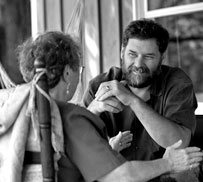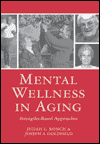![]()
Search
Recent Posts
- ChangingAging.org Redesign -- Please Bookmark!
- Disaster in Buffalo
- Power Up Friday
- Blanchard WinsDays
- Kevin Frick writes...
- Monkhouse Monday
- Getting Closer!
- Blanchard WinsDays
- Power Up Friday
- My Pick for Health and Human Services
- Understanding Health Care Reform
- Facts Are Stubborn Things: Social Security Edition
- Monkhouse Monday
- Localism is Coming
- Krugman Can't Wait...
Recent Comments
Category Archives
- AGING 100
- Aging
- Culture
- Dementia
- Eden Alternative
- Erickson School
- Green House
- Health Policy
- Longevity
- Media
- Rockets
Monthly Archives
- February 2009
- January 2009
- December 2008
- November 2008
- October 2008
- September 2008
- August 2008
- July 2008
- June 2008
- May 2008
- April 2008
- March 2008
- February 2008
- January 2008
- December 2007
- November 2007
- October 2007
- September 2007
- August 2007
 Subscribe to this blog's feed
Subscribe to this blog's feed
Announcements

Blog Data
« Must Watch, Must Share, Must Act Now | Main | Role of the Next Generation of Culture Change Advocates »
January 28, 2008 |Permalink |Comments (0)
Preventing the Epidemic of Falls
[Editor's Note] This public service announcement comes from Changing Aging reader Nate Bushnell, an 83-year-old retired salesman who is on a mission to bring balance -- literally -- to the lives of elders. Dig this Denver Post story on Nate's generosity.
Preventing the Epidemic of Falls
By Nate Bushnell
The Center for Disease Control predicts an epidemic of falls and injuries among our elderly population as it doubles during the next 12 or 15 years. One third of them will be injured in falls. The cost of caring for those recent injuries was 20 billion dollars per year. There is a need for better prevention of falls.
Understanding falls can be simple. The human body is made up of levers called bones and power sources called muscles. These are controlled by a nervous system which has sensors which help to keep us upright or balanced. When age or injury causes damage to the nervous system falls can happen. Gravity takes control of the off-balance person, causing a fall and injury.
Physical support is needed to prevent or stop a fall. For a balance-impaired person this can be supplied by a walking stick, a walker, a wheel chair or crutches.
The walking stick is a versatile, reliable support which can prevent gravity- powered falls. It has been used for thousands of years in societies around the world. A proven solution to a continuous problem. The Bible mentions it in "Thy rod and thy staff they comfort me."
The stick is a tall lever which connects to a power source, the shoulder and arm muscles, which lets the user pull himself up and prevent a fall. This ancient wisdom works. It needs to be discovered by our modern medical people.
A three-legged stool is more stable than a two-legged ladder.
I am an 83 year old user of a walking stick which has saved me from many falls. My colleague, Van Nielson has been a user for 20 years. I have made and given away over 120 walking sticks.
No complaints. It works.
Dependable support can reduce the injuries caused by the epidemic of falls, which is probably already here and growing.
The Walking Stick
The walking stick is a proven strong support for preventing falls and injuries. A good walking stick should be tall, strong, light weight, non-collapsible and well connected to the user's hand.
The stick is a lever which can reach a large area to give the strong muscles of the arm and shoulder a tall handle where the user can pull himself upright.
The versatile stick can be used to help a person pull himself up from a low chair or bedside, either alone or with the help of another person.
The tall stick makes going down stairs much safer and easier than with a cane.
If a fall does occur the strap on the stick maintains it's hold on the user's hand while the shoulder muscles tense and slow the fall so that little or no damage is done on impact. In three falls on a concrete curb I did not even get a bruise. I am a balance-impaired user, age 83. It works.
For most adults I make a stick 48 to 52 inches tall with a strap much like a ski pole at the top and a rubber crutch tip at the bottom. Parts cost is about $3.50. I have made and given away over 120 walking sticks. No complaints. Some instruction is needed.
"Get a cane" is not good medical advice.
INSTRUCTIONS on the use of the walking stick to add stability for balance-impaired people
Physical support prevents falls. Correct use of the strap for the hand is necessary.
With the stick upright, hold the strap out at right angles to the stick and towards you. Pass your hand up through the loop from below, then open your hand and bring it down on the strap and around the stick in one movement. Much of the weight will then pass through the strap and into your arm above your wrist, reducing wrist fatigue when using the stick.
Getting up from a low chair or bedside:
Scoot forward in the chair, put the bottom of the stick between your heels, top of the stick out in front of your face. Grasp the top of the stick in both hands and lean forward forcefully while pulling yourself up with the stick. This takes some practice to learn to do it well.
A caregiver can help make the above maneuver easier by standing in front of the user, facing him and one step back, both hands on the top of the stick. At the same time the user pulls himself upward while the caregiver pulls backward. An easy pull by both gets the user up.
Amputees who have lost one or two legs can use two sticks to add stability to their walking.
Crutch tips come in sizes. I use the 5/8th inch tip. It is available at hardware stores for about 69 cents. At drug stores they demand about 2 dollars each.
When a crutch tip is wet it gets slick and looses some traction. When I go into a store I scrub the crutch tip on the carpet inside the door to dry it. It helps.
Questions?
Contact Nate Bushnell© 303-794-6956, natebATecentralDOTcom














